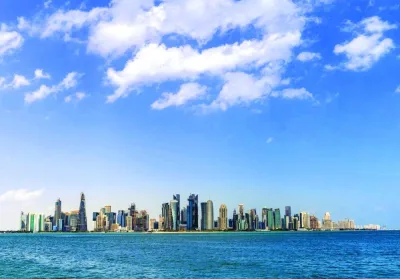Malaysia’s economy grew at its slowest pace in two years in the July-September quarter as the country grappled with weak external demand and what the central bank called “supply shocks” for liquefied natural gas and palm oil.
The fourth straight quarter of slowing growth presents a challenge for the administration of Prime Minister Mahathir Mohamad, who in May ended six-decade-long single party rule in Southeast Asia’s third-largest economy.
The central bank forecast a slight recovery in economic growth for next year, but some private economists said a rebound was unlikely, citing a combination of slowing external growth and domestic demand.
Annual growth in July-September was 4.4%, Bank Negara Malaysia (BNM) said. That was below the forecast of 4.6% in a Reuters poll and April-June’s pace of 4.5%.
“Growth has bottomed and on upside going forward,” BNM governor Nur Shamsiah Mohd Yunus said.
Global trade tensions could drag the country’s growth down by 0.3%-0.5% next year if it gets worse, she said.
She forecast the economy to expand 4.9% next year, following 4.8% for full-year 2018.
Capital Economics said the third quarter numbers show growth was “still struggling for momentum” and that a sustained rebound was unlikely.
It expects growth of 4.5% next year.
Euben Paracuelles of Nomura, citing a combination of slowing global economy, lower exports and private consumption, said Malaysia’s growth rate “is likely to get worse. It will be a more broad based slowdown next year.”
The central bank said growth in the third quarter was supported by a 9% increase in household spending and 6.9% gain in private spending.
But the supply shocks from LNG and palm oil markets lowered growth for Southeast Asia’s third-largest economy by 0.5-0.7 percentage point, the central bank said. The supply shocks have bottomed, it said. For July-September the current account surplus narrowed to 3.8bn ringgit.
Exports rose 6.7% in September from a year earlier, rebounding from a 0.3% annual drop the previous month, according to government data.
In the third quarter, Malaysia’s trade surplus fell 4.1% from a year earlier to 25.2bn ringgit. In April-June, the surplus was 27.2bn ringgit, a 12.9% annual rise. In its economic outlook report released two weeks ago, Mahathir’s government forecast economic growth of 4.8% in 2018 – a sharp dip from last year’s 5.9% – before inching up to 4.9% next year.
The government also abandoned a 2018 fiscal deficit target of 2.8% set by the previous administration, raising it to 3.7%, the highest since 2013.
It expects moderation to 3.4% in 2019 and 2.8% in 2021. The BNM governor said the central bank expects the ringgit to depreciate along with other regional currencies due to the strength in the US dollar. Inflation was largely benign in the third quarter, but is expected to edge upwards the rest of the year and into 2019, the central bank said.
Annual inflation rose 0.3% in September, a slight acceleration from a month earlier. The consumer price index rose 0.2% in August, the lowest rate since February 2015.

Skyscrapers are seen in Kuala Lumpur. The Bank Negara Malaysia forecast a slight recovery in economic growth for next year, but some private economists said a rebound is unlikely, citing a combination of slowing external growth and domestic demand.


